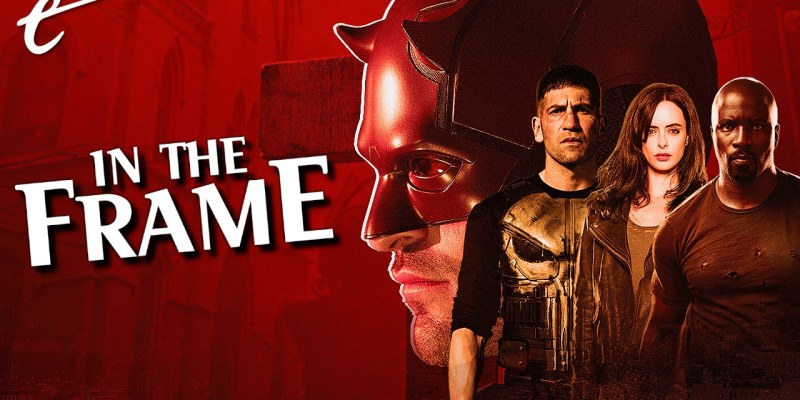The Netflix Marvel shows arrived on Disney+ last week, and the service has made quite a big deal of their arrival.
Daredevil, Jessica Jones, Luke Cage, Iron Fist, The Defenders, and The Punisher were welcomed to “the streaming home of Marvel” with a new trailer and a new “Defenders Saga” collection on the service. Rumors circulating about a new season of Daredevil have picked up renewed steam, with actor Charlie Cox confirming that the character will return following his cameo in Spider-Man: No Way Home and building on Vincent D’Onofrio’s late appearance in Hawkeye.
However, it appears that not everybody is happy with this news. In the week before the arrival of these shows on Disney+, the Parents Television Council decried the potential presence of R-rated content on the traditionally family-friendly streaming service, lamenting that the studio’s “foray into TV-MA-rated fare will forever tarnish its family friendly crown.” This sort of moral panic is typical of how the Council operates, having a history of protesting everything from Dawson’s Creek to Skins.
This outrage offers both a challenge to and an opportunity for Disney’s public perception. Historically, Disney has been synonymous with all-ages animation and child-friendly live action, but that identity may not be compatible with the demands of a modern streaming brand.
In the past, Disney has effectively laundered its adult-oriented content through subsidiary brands. In some respects, this has constrained the company. No movie that opens with the Disney logo has ever won the Best Picture Oscar, for example. Traditionally, adult-skewing movies released through distributors owned by Disney, like Miramax, Touchstone Pictures, or even Buena Vista. For instance, the studio’s first ever R-rated film, Down and Out in Beverly Hills, was released through Touchstone.

Although Disney has sold or retired those three brands, the tradition continues through streaming services like Hulu and recent acquisitions like 20th Century Studios. Expanding the ownership stake it inherited through its purchase of Fox, Disney took control of Hulu and used it to house adult-targeted films and television shows. In 2019, Stuber became the studio’s first R-rated release in six years, after The Fifth Estate, a Touchstone film. Stuber was inherited through the Fox acquisition.
This has been a particular source of tension around Disney+, the company’s branded entry in the streaming wars. When the service launched, it was made clear that it would primarily target the family audience. Less than a month after the service premiered, a Disney+ spokesperson assured The Ringer, “Disney+ is a family-friendly service, so no, no rated R content. The max rating for programming on Disney+ is PG-13/TV14.”
This approach makes a certain amount of sense, particularly in the context of the American market. Streaming services have long seen families as a key demographic, with Netflix investing heavily in the area over the past decade. Given the advantage that Disney enjoys, having cultivated its reputation as a family-friendly brand over the better part of a century, it makes sense that the company’s streaming service sought to establish its place in the market based on that identity.
American media has long been haunted by moral panics and the looming threat of censorship, creating a culture that aggressively self-censors. In 2017, the Parents Television Council criticized both Netflix and Amazon Prime for making adult content available to children. Disney is particularly adverse to controversy, to the point that it fired James Gunn from Guardians of the Galaxy Vol. 3 off the back of a manufactured internet campaign (before eventually rehiring him), so it makes sense that it would tread very carefully.

However, there are signs that the market is shifting. Recent years have seen both Netflix and Amazon Prime embracing high-profile adult content. In 2020, Netflix became the streaming home for Polish erotic thriller 365 Days. Though its sexual politics were heavily criticized, it became a cultural phenomenon and dominated the service’s streaming charts. The following year, Amazon Prime released The Voyeurs. Even Hulu got in on the act, releasing Deep Water this past weekend.
There is an argument to be made that Disney should consolidate all of its brands under the Disney+ banner. While an external silo like Hulu might have made sense in the past, studies suggest that there are only a finite number of streaming services to which the average household will subscribe, so having a concentrated library in a single place makes sense. More than that, in the era of vertical integration, it makes sense to package as much content under a single umbrella as possible.
There are indications that Disney understands this. Internationally, Disney has repackaged a lot of Hulu and 20th Century Studios content for a tier within Disney+ known as “Star.” In recent months, that banner has housed adult-oriented projects like the sex tape drama miniseries Pam & Tommy and the dating horror Fresh on Disney+ in European markets.

However, there are reports that Disney itself is internally divided on the question of whether the core brand is willing to take the leap to allow adult content. In February 2021, Kevin Feige signaled that Marvel Cinematic Universe projects could be rated R “only if they make sense.” In November 2021, it was reported that former CEO Bob Iger was philosophically opposed to the prospect, while his successor Bob Chapek was more willing to follow the data and the market.
Chapek’s support of more adult-oriented content on Disney+ is rooted in some surprising demographics. Roughly half of the streaming service’s subscribers are adults without children. In March 2021, Chapek told the Morgan Stanley Technology, Media and Telecommunications Conference, “(W)hen 50% of the people in Disney Plus don’t have kids, you really have the opportunity now to think much more broadly about the nature of your content.”
With all of this in mind, the arrival of the Netflix Marvel shows on Disney+ provides an interesting control case. These are all shows that are clearly connected with one of the company’s core brands. Even if the shows were functionally siloed from the larger Marvel Cinematic Universe, the presence of Matt Murdock (Cox) in No Way Home and Wilson Fisk (D’Onofrio) in Hawkeye provide a clear bridge between this pocket of the shared universe and the ongoing narrative.

In doing so, Disney has the potential to provide a shot of adrenaline to an increasingly staid and sterile superhero universe. In a world of weirdly sexless superheroes, where – to quote RS Benedict – “everyone is beautiful and no one is horny,” the opening seasons of Daredevil and Jessica Jones provide explicit sex scenes. Enjoying the freedom to grapple with mature themes, Daredevil and Jessica Jones also feature two of the best Marvel-related villains in any media.
Of course, Disney faces a challenge in trying to fold these characters and these shows into the shared universe. Even on Netflix, there was a clear desire to soften the edges of characters like Frank Castle (Jon Bernthal) on The Punisher, which doesn’t bode well given how wishy-washy Disney’s Marvel Studios productions can be. It will be interesting to see, for example, whether Cox’s future appearances in the role of Matt Murdock delve as deeply into his Catholicism as Netflix did.
There are plenty of reasons to be skeptical. D’Onofrio’s appearance in the final episode of Hawkeye largely consisted of Wilson Fisk throwing Kate Bishop (Hailee Steinfeld) around a toy store like a bargain basement version of the Abomination (Tim Roth) from The Incredible Hulk. However, there are some indications that market forces might push Disney out of its comfort zone and allow it to use these inherited characters in a way that plays to its unique strengths.
Maybe the Netflix Marvel characters are just the heroes that Disney needs right now.
